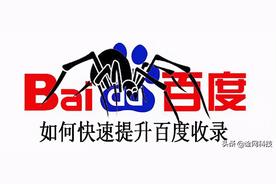Website Optimization, often abbreviated to WO or website optimization, is the method of improving the usability, speed, and visibility of a website. It is an essential aspect of digital marketing that focuses on enhancing the user experience and increasing the website's search engine ranking. The process involves various techniques and strategies aimed at making the website more efficient, effective, and Appealing to both users and search engines. In this article, we will explore the different parts of website optimization and how they contribute to the overall success of a website.
1、On-Page SEO (Search Engine Optimization)
On-page SEO refers to the practice of optimizing individual web pages to rank higher in search engine results and earn more relevant traffic. This includes optimizing elements such as title tags, meta descriptions, header tags, content, images, and internal linking structures. By ensuring these elements are optimized, websites can improve their visibility in search results, leading to increased organic traffic.
2、Technical SEO
Technical SEO involves optimizing the technical aspects of a website, including site architecture, URL structure, page speed, mobile-friendliness, and security (HTTPS). These technical factors play a crucial role in ensuring that search engines can crawl, index, and rank a website effectively. Technical SEO also includes fixing broken links, implementing redirects, and optimizing website code to improve loading times.
3、Content Optimization
The quality and relevance of a website's content are essential for both users and search engines. Content optimization involves creating high-quality, engaging, and valuable content that meets the needs of the target audience. This includes optimizing text, images, videos, and other multimedia elements to provide a seamless user experience. Additionally, content optimization ensures that the website's content is well-structured, easy to read, and includes relevant keywords and phrases.

4、User Experience (UX)
User experience refers to how users interact with and perceive a website. A positive user experience is critical for keeping visitors on the site, encouraging them to return, and converting them into customers. UX optimization involves improving website design, navigation, accessibility, and overall functionality to provide a seamless and enjoyable experience for users. This includes optimizing page layouts, using intuitive navigation menus, and ensuring that the website is accessible on various devices and browsers.
5、Mobile Optimization
With the increasing use of smartphones and tablets, mobile optimization has become an essential part of website optimization. Mobile optimization involves designing and developing a website to provide an optimal viewing experience on mobile devices. This includes responsive design, touchscreen-friendly interfaces, and optimizing content for smaller screens. By ensuring that a website is mobile-friendly, businesses can reach a wider audience and improve their search engine rankings.
6、Local SEO
Local SEO refers to optimizing a website to improve its visibility and ranking in local search results. This is particularly important for businesses with physical locations, such as retail stores, restaurants, and service providers. Local SEO involves optimizing Google My Business listings, local directories, and website content to include relevant location information, such as addresses, phone numbers, and area codes. By improving local search visibility, businesses can attract more foot traffic and local customers.
7、Link Building
Link building is the process of acquiring hyperlinks from other websites to your own. These links act as votes of confidence, indicating to search engines that your website is trustworthy and authoritative. Link building involves creating high-quality content that other websites will want to link to, as well as reaching out to other websites and bloggers to request backlinks. By building a strong network of quality backlinks, websites can improve their search engine rankings and drive more traffic to their site.
8、Social Media Optimization
Social media optimization involves using social media platforms to promote a website and increase its visibility. This includes optimizing social media profiles, sharing content on social channels, engaging with followers, and using social media advertising. By building a strong social media presence, businesses can drive traffic to their website, build brand awareness, and engage with their target audience.
9、Analytics and Reporting
Analytics and reporting are essential for tracking website performance and identifying areas for improvement. This involves using tools like Google Analytics to monitor website traffic, user behavior, and conversion rates. By analyzing this data, businesses can identify patterns, trends, and opportunities to optimize their website further. Regular reporting and analysis enable businesses to make data-driven decisions and continuously improve their website's performance.
In conclusion, website optimization is a multifaceted process that involves various techniques and strategies aimed at improving a website's usability, speed, and visibility. By focusing on on-page SEO, technical SEO, content optimization, user experience, mobile optimization, local SEO, link building, social media optimization, and analytics and reporting, businesses can create a website that provides an exceptional user experience, ranks highly in search results, and drives more traffic and conversions.
评论列表 (0条)